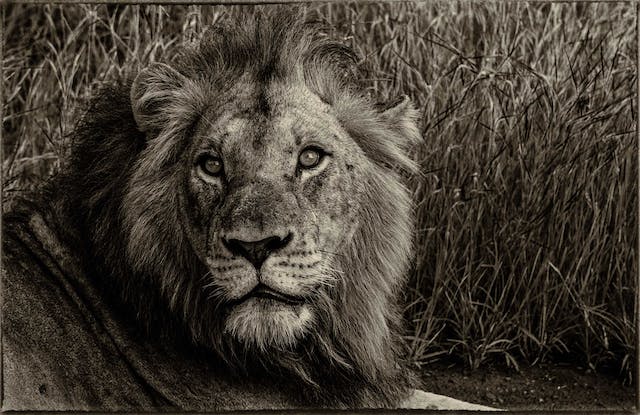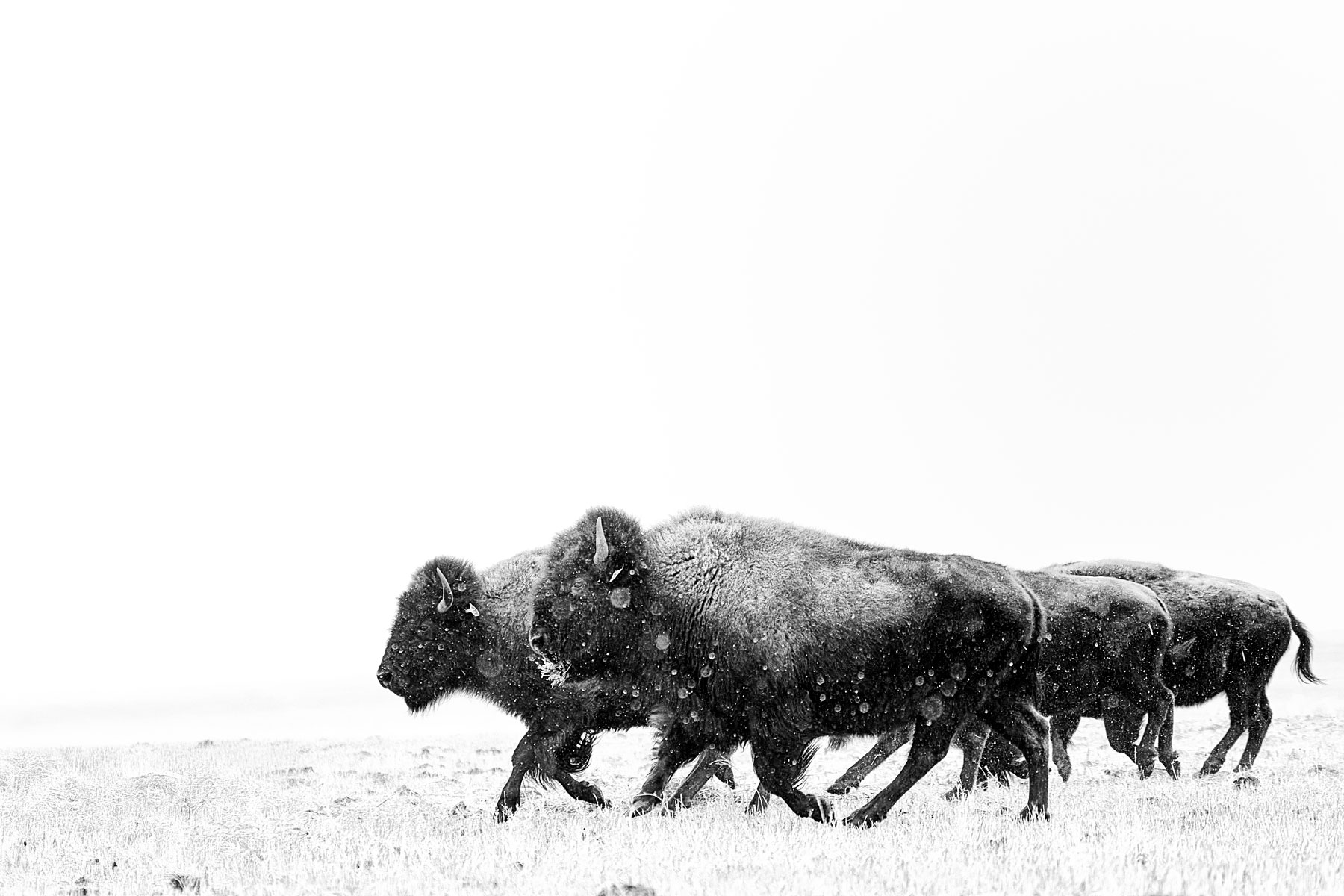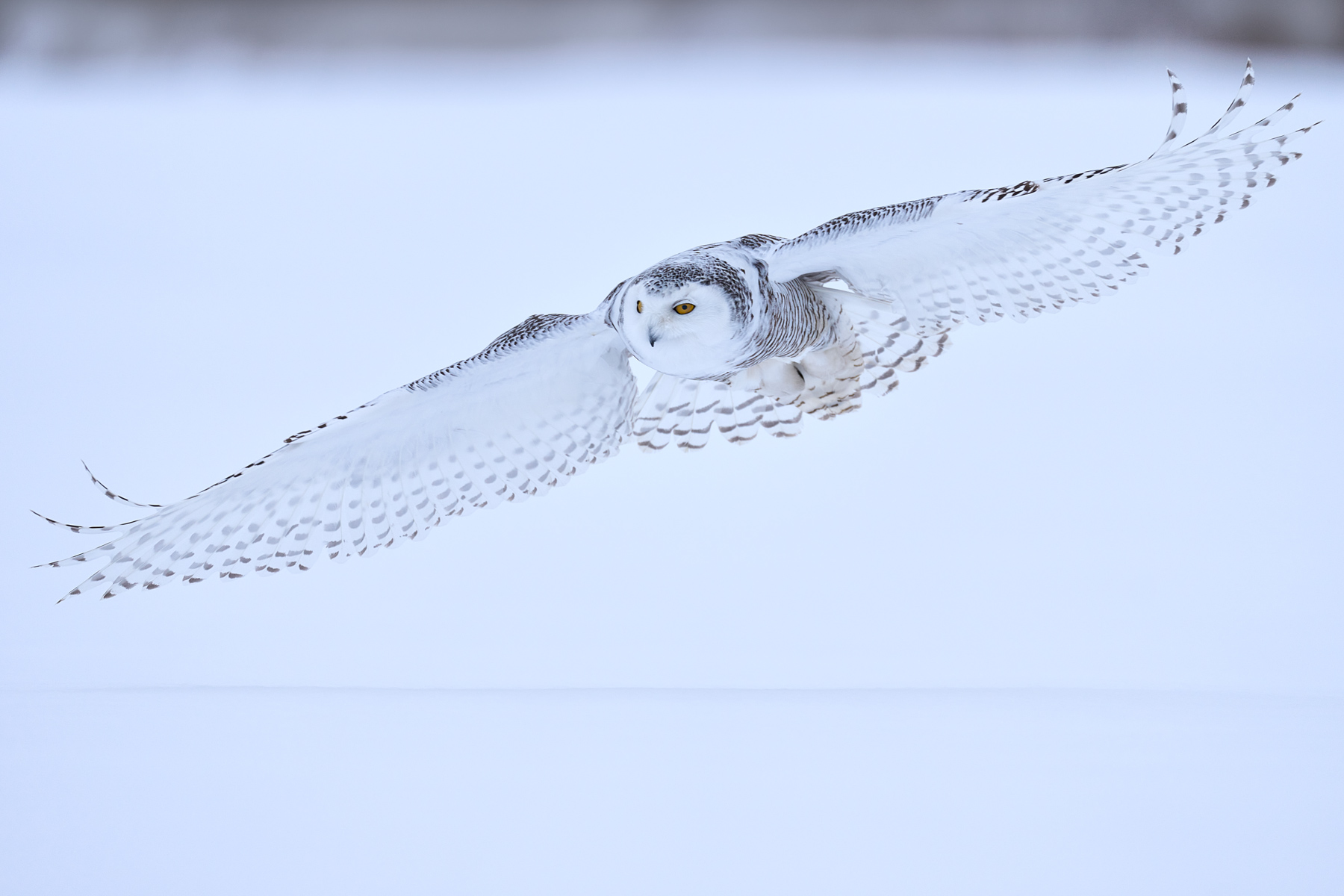The art of capturing the beauty of nature and the drama of wild animals through black and white or color photography can create a stunning visual narrative. Appreciate how this technique impacts our emotions as we explore both mediums, investigating their techniques, aesthetics, and range in conveying the majesty of nature. Be amazed by these mesmerizing images that offer remarkable contrasts between black-and-white animal photos compared to those with vibrant colors – each displaying an incomparable world full of magnificent wildlife!
Key Takeaways for Capturing the Beauty of Nature
- Discover the timeless elegance of black and white animal photography, or add a splash of vibrancy to your space with colorful photos!
- Master exposure techniques & experiment with post-processing for stunning images that resonate!
- Capture the beauty of nature’s creatures in their rawest form through mesmerizing black-and-white animal photography.
The Art of Black and White Animal Photography

The beauty and power of black and white animal photography is undeniable, emphasizing the elegance of minimalism while capturing the subject’s patterns, textures, and lines, as well as evoking emotion. Lovely photos can be achieved by taking away color distractions to get an up-close appreciation for these animals’ personalities. This type of art form also highlights their shape and tones for beautiful images that often go unseen in colored photographs due to a more intimate expression through timeless designs made possible only through fine art black & white shots. It makes a powerful statement that creates a connection with viewers without relying on colors or other distracting elements found in nature itself.
Minimalistic Aesthetics
Photographers are able to explore and uncover beauty through black and white animal photography, allowing them the chance to focus on shapes, textures, patterns as well and tonal contrast. This can create striking images that highlight aspects of nature’s creatures in an honest raw way that is timelessly elegant. Minimalist aesthetics play a key role when it comes to showcasing this world of mesmerizing visuals found within monochromatic realms and white animal pictures. The result is a collection of exquisite pictures depicting what these animals look like without any other colors intervening or obscuring their unique features.
Emotional Impact
Capturing black and white animal images has the ability to arouse varied emotions by showcasing contrasts, eliminating disturbances, and accentuating the features of its subject. By studying textures, shapes, patterns, and composition in detail one can create powerful feelings through this type of photography, allowing people to become attached to their picture’s focus point. Through mastering exposure and varying lighting conditions, photographers can enhance these emotion-filled photographs crafting pieces that are timeless for viewers alike which will emphasize intense tonal contrast including texture leading up to spectacular results specifically those photographed in black or white hues.
Color Animal Photography: Vibrant and Lifelike
Wildlife photography, with its use of natural light and white balance settings along with polarizing filters, allows photographers to create beautiful photos that show the vividness of wild animals in their native habitats. The colors bring life to these images by showcasing a variety of hues from bright blues seen on Morpho butterflies’ wings to bold reds found on macaws’ feathers – creating an aesthetic sensation that captures the animal’s personality and celebrates nature’s diversity. Colorful photographs emphasize elements like tone as well as help provide more dimensionality so subjects can truly stand out among other pictures.

Capturing Nature’s Palette
Capturing animals in their natural environment can create gorgeous images of the vibrant colors and patterns of nature, which photographers often emphasize by implementing a well-selected color scheme. Various techniques such as altering white balance for accuracy or manipulating natural light with wide aperture to blur backgrounds are essential skills that must be mastered to appreciate this mesmerizing world full of captivating hues. The beauty is amplified when factoring how different lighting conditions impact color reproduction, whether it’s warm golden hour glow or soft shadows from cloudy days – all resulting in striking photographs truly reflecting mother nature’s grand array.
Dynamic Scenes
Animals and the wonders of nature can be vividly captured through color animal photography, with images showcasing life and energy. Photographers are able to create dynamic photos by using methods such as low-angle shots, wide apertures, or motion blur techniques. The shutter speed and camera used also plays an important role in these photographs. Faster speeds allow for capturing moments frozen in time while slower ones result in artistic blurring effects. To bring out life on the image while adding focus points, one must take into consideration depth of field when shooting animals outdoors, this creates pictures that have movement ingrained within them yet remain aesthetically pleasing at the same time!
Comparing Techniques: Black and White vs. Color
When it comes to taking pictures of animals, black and white photography as well as color photography have their own distinct advantages. Black and white animal photos are more focused on minimalism, feeling, and classic beauty while capturing nature in vibrant colors gives a living energy to the image being taken. The choice between these two styles heavily relies on what sort of emotional response you wish for your subjects or creatures that are photographed- lighting techniques along with composition must be viewed when looking at either side justly.
Black/white animal shots emphasize contrast & range whereas accurate coloring strives to illuminate true shades and portray the essence of life which can also include creating stunning art pieces highlighting all aspects regarding any creatures, this way photographers create incredible photographs by utilizing various methods cautiously thereby uncovering its majestic beauty naturally!
Lighting Considerations
When it comes to black and white or color photography, the proper lighting is key in order to produce images that are of superior quality. For a good black–and-white animal photo specifically, strategic light sources need to be used so that there is an emphasis on texture, shape, contrast & dimension, thereby making the final photograph more aesthetically pleasing. With regards to animals, which feature prominently in color photographs. Good illumination helps make their natural colors pop out creating dynamic visuals while highlighting their unique beauty at the same time! Appropriate light settings such as Golden Hour have immense potential when used properly, with camera settings being adjusted accordingly giving you striking pictures featuring your chosen subject matter.
Composition Choices
In black-and-white animal photography, composition choices are made to bring out the features of a subject or to narrate a story. Techniques such as tone, detail, and contrast can be used to create stunning black and white animals images that give emphasis on an animal’s unique qualities. The lack of color draws attention to its texture and forms. Resulting in photographs that look elegant yet timeless.
For colors Photographers must take into consideration their choice carefully because it has a huge impact when taking pictures of animals – vivid hues along with contrasting tints lend drama while backdrop selection creates visual pleasure thus leading viewers through certain emotions simultaneously.
Both approaches need deliberation over composition, but compared to monochrome shots where only whites reign supreme – the introduction of additional coloring adds Depth. Showcasing nature’s beauty within every creature captured by photo cameras at the first instance itself!
Choosing the Right Approach for Your Subject
When deciding on the right approach for your animal subject, consider its characteristics, how you would like it to be perceived, and what style of photography suits you best. Black-and-white photographs can bring out a distinct texture or pattern that monochromatic animals such as pandas or zebras possess while colored creatures – including parrots and butterflies, truly shine when put in vibrant color backgrounds since they boast unique hues. Try both styles of photography to find one that effectively emphasizes their beauty. Whether opting for timeless black and white images or captivatingly colorful pictures will ultimately depend upon your creative vision as a wildlife photographer yourself.
Monochromatic Subjects
Black and white photography can help highlight the beauty of monochromatic animals, such as zebras or pandas. By stripping away colors that may distract viewers from their natural patterns and textures, photographers are able to draw attention specifically to details that would otherwise be difficult for people to notice. As a result, photographs will become emotionally stirring pieces of art featuring the unique features present in each animal—the stripes on a zebra’s fur or distinct markings found within panda coats. The contrast between light tones against dark also creates visual dynamics that make these images stand out with ease. In this way, black and white photography provides an elegance never seen before while simultaneously preserving timelessness throughout every photograph it takes part in creating.
Colorful Creatures
Animals with vibrant coloring, such as butterflies or parrots, can be beautifully showcased through color photography. Through this medium, the natural hues and patterns of these creatures are highlighted in lifelike detail to bring out their beauty. Capturing these images requires a mastery of exposure techniques along with proper lighting and composition, which creates stunning results that celebrate the diversity found within animal life. Utilizing camera settings helps photographers add depth while adding dimensionality to the image to make the subject stand out against its backdrop for an overall effect where even more colorful brilliance is made manifest!
Enhancing Your Animal Photography Skills
Images of animals can be enhanced by understanding exposure, employing post-processing techniques, using black and white effects and drawing on the expertise of other photographers. Knowing how exposure influences an animal photograph’s clarity, details and ambiance allows for a more stunning showcase of its beauty. Editing such as black-and-white conversion or adjusting saturation enables you to create photos with just the right look and feel. By studying other professionals’ wildlife photography practices one is able to refine their own capturing skills so they too may produce breathtaking images that will captivate any audience.
Mastering Exposure
When it comes to taking animal photos, mastering the exposure is paramount in order to obtain excellent quality images that can truly showcase your subject’s beauty. To get a perfect balance of light and shadow for capturing wildlife scenes accurately you must become familiar with all related settings such as shutter speed, ISO, and aperture. It also helps if experienced photographers are consulted on their techniques so that one can better understand how lighting affects an image overall or what details need to be highlighted when exposing the photograph properly.
Once these elements have been taken into consideration along with researching the animals’ natural environment and behaviors. Creating stunning photographs will be achievable by using this new knowledge appropriately to emphasize its beauty while perfectly recording its activities at precisely exposed intervals!
Experimenting with Post-Processing
Creating visually captivating animal photographs that accurately display the beauty of your subjects can be accomplished by mastering various post-processing techniques. Using digital editing software, you are able to tweak saturation levels, adjust brightness and contrast settings, and color composition in order to create a focal point within images. Despite making edits, it is still possible to preserve the natural characteristics present while still accenting colors for added impact.
Experimenting with these photo adjustments will improve your photography skills significantly as you capture beautiful photos that showcase animals from different environments. By utilizing post-processing tools effectively, you have an incredible opportunity to produce unique photographic artwork that truly reflects how majestic animals can be!
Decorating with Black and White vs. Color Animal Photos

When considering the addition of animal-themed photos to your decor, there is a range between black and white photos or colorful prints. Incorporating statement pieces of classic black-and-white animal wall art into any living space can impart an atmosphere that evokes both tranquility and style. Alternately, choosing vibrant color options presents an opportunity to celebrate the lively aspects of nature with energy – all while matching existing colors in rooms for cohesion’s sake. It is possible to create a stunning visual look by paying attention to one’s personal aesthetic preferences as well as what already exists within their environment when incorporating either alternative. Be it monochrome or full-hued representations highlighting this particular beauty from Mother Nature!
Creating a Timeless Look

White animal photography produces a classic look that works well with various decor styles such as minimalist, modern, industrial, and Scandinavian. This timeless elegance of black and white animals adds sophistication to any space. When placed in your living area it has the potential to provide an aura of tranquility which is comforting for all who view it. Captivating wildlife and landscape photos are captured beautifully when done in black & white – creating impressive impressions on visitors!
Adding a Splash of Color
Animal photos with vibrant colors bring life, colour and energy to your dwelling, featuring the dynamic elements of nature in full technicolor. From a peacock’s dazzling blues to a macaw’s burning reds, these images capture the wide-ranging diversity and splendor of wildlife for an eye-catching effect that can enliven any room.
Incorporating such colored animal prints into decor reveals individual flair while admiring natural beauty. Whether selecting one large picture as focal piece or displaying several small photographs, it adds creativity and verve transforming space into an inviting environment depicting the mesmerizing world through animals.
Summary
Photography of animals, either in black and white or in color, has the potential to be truly captivating by capturing the beauty that nature provides. This medium can give life to any space while helping photographers hone their skills through exploration and experimentation with both types of photography, from timeless elegance found within monochromatic images to vibrant energy brought about by colors. Whatever your artistic preferences may be, embracing animal photography is a great way for anyone around the world to appreciate its fullness and expressiveness.
Frequently Asked Questions
Is black and white better than color photography?
The selection of black and white photography or color photography may vary depending on what the photograph is meant to convey. For instance, Black and White photographs are able to evoke emotions, bring out subtle details in shadows and texture while Color photos have a greater capability for linking up with viewers by adding vibrancy as well as highlighting key elements that make up the subject matter. Ultimately it boils down to personal preference when selecting between both mediums – but whatever you choose will impact how your final picture looks!
What is the difference between monochrome and color photography?
Monochrome photography captures various tones within a single shade of color. Whereas, with color photos, multiple colors of the spectrum are seen. In particular black and white images tend to feature a range from completely white down to pure black shadows along with all shades in between. This array comprises what we refer to as monochrome photo composition – something that demonstrates an elegant blend of light & dark.
Can black and white animal photography evoke emotions?
The use of black-and-white animal photography can produce a strong emotional reaction through the contrast between light and dark tones, the reduction of basic elements within an image, and the emphasis on the features of the subject. By combining these key components – blacks, whites, and animals in photos – this form of art creates powerful visuals.
What are some techniques to master exposure in animal photography?
To master animal photography, it is important to acquire knowledge of the habitat and behaviors of the creatures you are photographing, as well as try different exposure settings. Experienced wildlife photographers can also provide invaluable tips for successful exposures in this type of image-making.
How can color photography enhance the features of colorful animals?
Photography of color can bring to life the wondrous patterns and shades found in animals, providing amazing detail to an already captivating image.













